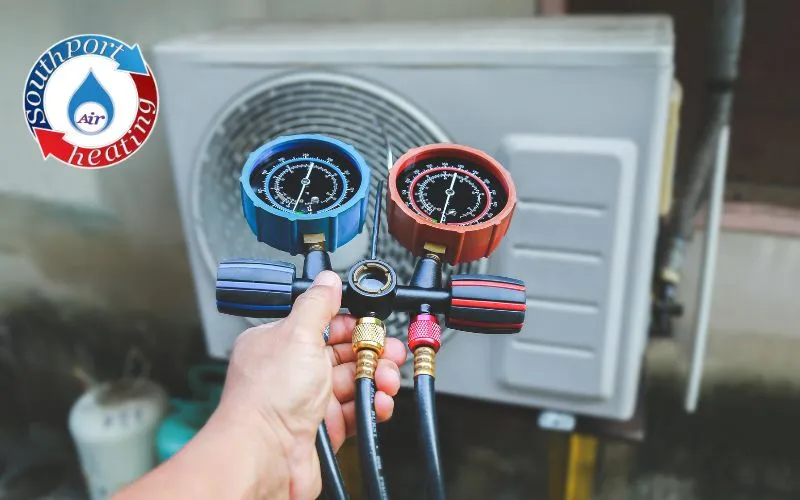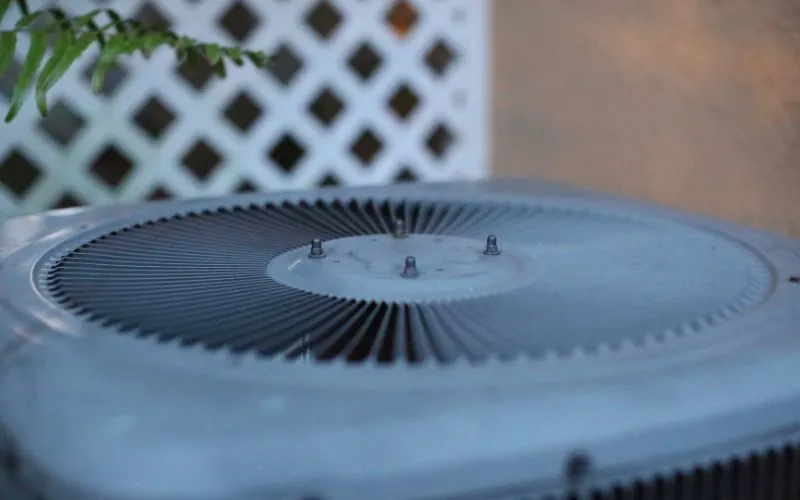AC Refrigerant Basics: Your Key to Efficient Cooling!

Our Recent Posts
New HVAC System Cost in Sacramento For 2025 – Southport
Airing Out Your Home: How Often Is Best in 2025?
Table of Contents
Your AC system contains many components, and each one of these components is crucial in ensuring that your AC system performs as efficiently and effectively as possible. AC refrigerant is one of the essential components of your system that helps it to function properly. To put it simply, refrigerant contributes to the cool air that flows throughout your home by your air conditioner. Without it, your system would not function. What AC refrigerant? How do you identify a refrigerant leak? This tutorial will explain why refrigerant is important in the home AC system, how to check your refrigerant levels, and what to do if you discover a refrigerant leak.
Southport Heating and Air provides complete air conditioning services, including refrigerant checks and leak identification. Our professional staff members are dedicated to ensuring that your air conditioner runs efficiently and keeps your house pleasant. If you have any immediate issues, please call us at (916) 606-3076.
What is AC refrigerant?
Air conditioner refrigerant is a chemical compound that plays a key role in the cooling process of an air conditioning system. Refrigerant, which can be either gas or liquid, takes heat from the inside environment and releases it outside, creating an exchange of cool air. This unique compound can transition between liquid and gas forms, allowing it to take in and release heat efficiently. Enclosed within the AC unit, refrigerant circulates continually, collaborating with other parts to maintain a pleasant indoor temperature.
How Does Home AC Refrigerant Work?
AC refrigerant operates by continuously cycling through a few core processes. The first is that during evaporation, the refrigerant absorbs heat from the inside air and evaporates as a gas. Then, during the compression step, the refrigerant (now a gas) is compressed, increasing temperature and pressure. It then travels to the exterior condenser unit, where it condenses, the heat is evacuated, and it returns to liquid form. The final stage is the expansion phase, in which the refrigerant expands, cools, and returns to the evaporator to collect additional heat. This constant process of absorbing and then rejecting heat is required to maintain cool air in your home or building.
Types of AC Refrigerant
Today there are many types of AC refrigerants used in air conditioning systems, but the two main types are: the first one is R-22 known as Freon; and the second one is R-410 or Puron. R-22 currently has been the conventional refrigerant used in air conditioners produced before 2010 as it highly depletes the ozone layer due to its high ODP. Therefore, the manufacturing, as well as the import of R-22 has been banned in many countries among them being the United States.
R-410A is the more modern refrigerant and is considered eco-friendly as it is widely used in new air conditioning equipment. It operates at a higher pressure, thus it cannot be used with earlier models built for R-22 units. Also, R-32 is being adopted for its relatively low GWP and energy efficiency, and R-134A is mainly for automotive applications and some residential applications due to its low ODP but relatively high GWP. On average, the selected type depends on the age of the system: at the moment, the companies are trying to replace Freon with Puron and other ecologically harmless and efficient types of coolant.
Advantages of Using R410A AC Refrigerant
Using R410A, also known as Puron, has several significant benefits, making it the modern refrigerant for air conditioning systems. First, using Puron refrigerant improves system efficiency, which leads to improved cooling. However, it should be noted that older cooling units are incompatible with this type of refrigerant and will require replacement. Third, R410A is more efficient to create than R22, and as a result, the average production cost for households is predicted to be lower over time. Furthermore, R410A is less damaging to the atmosphere than Freon, albeit it does include certain potentially hazardous compounds. In summary, replacing R22 with R410A can result in improved efficiency, reduced costs, and lower emissions.

Detecting Refrigerant Leaks in Air Conditioning Systems
Freon is harmful not only to the environment but also to everyone who comes into contact with it when it spills. There are numerous signs, some obvious, others not.
The first indicator is that your air conditioning system is blowing warm air or has a considerable lack of airflow, which could indicate a refrigerant leak or low refrigerant pressure. The second symptom is higher electric bills, which occur when your system needs to work harder to produce cool air due to refrigerant loss. Another thing to consider is that if your air conditioner makes strange noises, gurgles, or bubbles, it could be an indication of a system malfunction and possibly a refrigerant leak.
Finally, and most crucially, keep an eye out for signs of refrigerant poisoning, such as dizziness, nausea, and difficulty breathing in any member of your family, which could suggest a refrigerant leak into the air, and seek medical assistance right once these symptoms appear.
The Environmental Impact of AC Refrigerants
R-22 and other older refrigerants used in air conditioners are extremely harmful to the environment. These compounds, when released into the atmosphere, deplete ozone and contribute to global warming. Today’s refrigerants, R-410A and R-32, are designed to have less of an impact, with lower ODP and GWP values. However, it must be disposed of and handled correctly, as releasing the refrigerant might cause injury.
The Shift to Eco-Friendly Refrigerants
Many countries have implemented regulations to minimize or phase out refrigerants with significant ODP and GWP. As a result, HVAC manufacturers are shifting their focus to environmentally friendly refrigerants such as R-32, which provide high cooling efficiency while also being safer for the environment. Customers can also contribute by selecting energy-efficient air conditioners that employ these latest refrigerants.
Why Proper Refrigerant Levels Matter
Your air conditioner must have the appropriate amount of refrigerant because this is what keeps it working efficiently and for a long period. Low refrigerant can lead to higher energy expenses, less efficient cooling, and increased wear on equipment. Over time, this can lead to costly repairs and limit the life of your air conditioner.
Maintaining correct refrigerant levels promotes environmental sustainability. Refrigerants that leak, particularly those with a high GWP, are extremely harmful to the environment. Maintaining and upgrading to eco-friendly refrigerants helps to minimize emissions and protect the environment for future generations.
Choosing the Right AC with the Right Refrigerant
When purchasing a new AC, selecting a model that uses a modern refrigerant like R-410A or R-32 is advisable. Consider factors such as cooling efficiency, environmental impact, and maintenance costs. Consulting with an HVAC professional can help you determine the best system and refrigerant for your needs.
Everyone should understand how AC refrigerant works if they want to maintain their cooling system running efficiently and environmentally friendly. R-22, R-32, and R410A each have advantages and downsides. With the help of technology, the HVAC industry continues to produce better refrigerants, making air conditioning more efficient and eco-friendly. Regular maintenance, fast leak repairs, and the use of the proper refrigerant will not only keep your home cool but will help reduce the environmental impact of your air conditioning system. Call Southport Heating and Air at (916) 606-3076 to have all of your heating and air questions answered.

